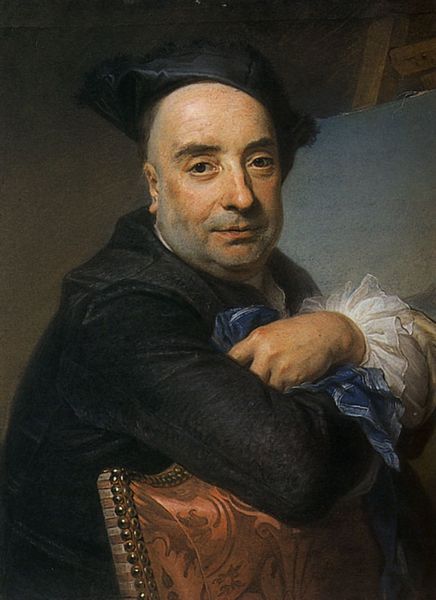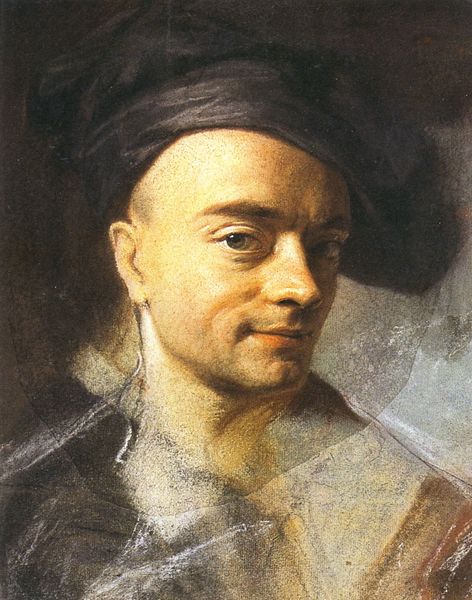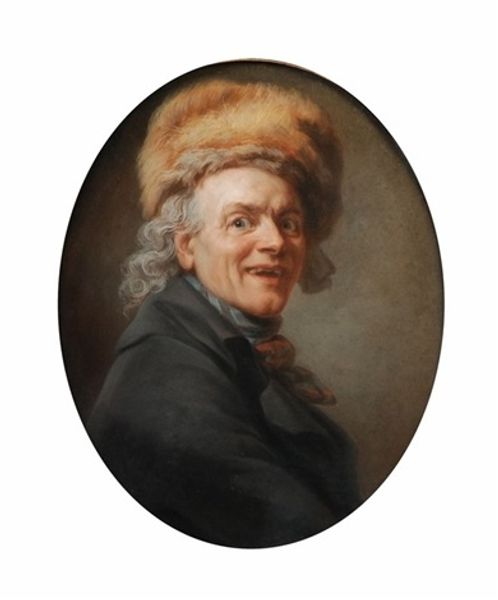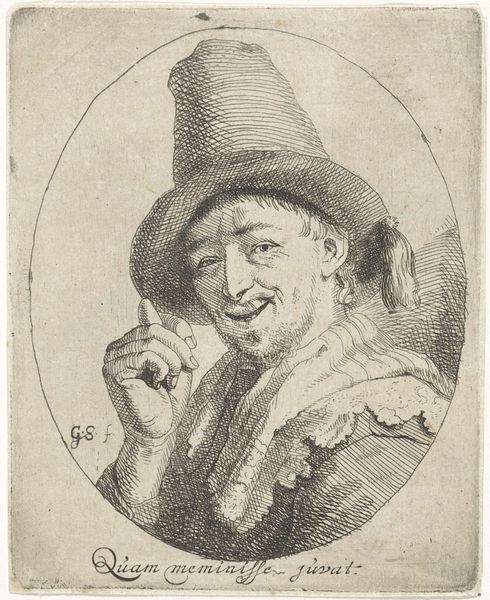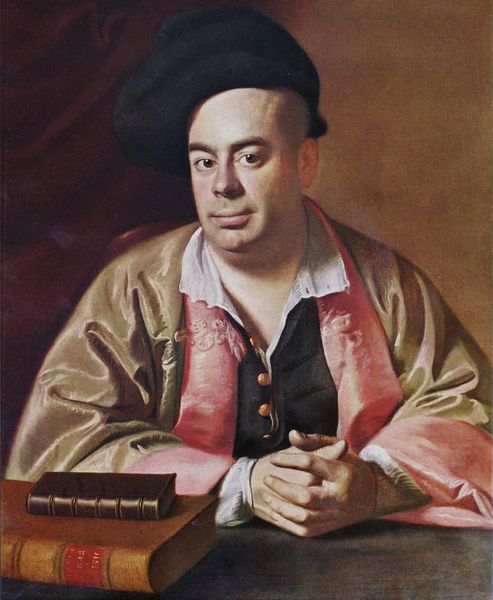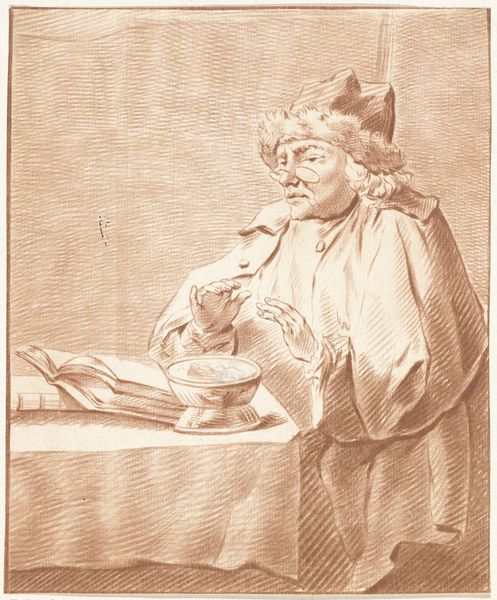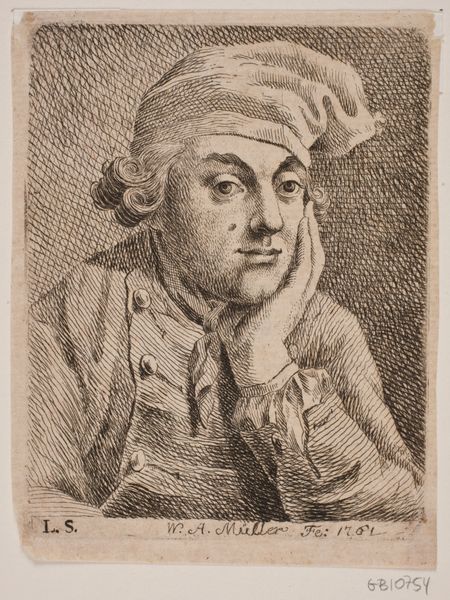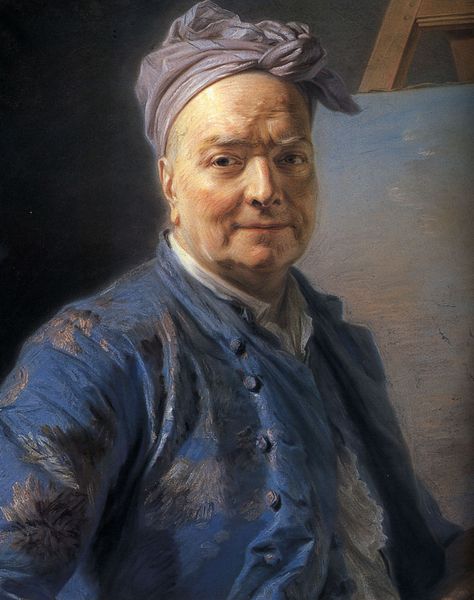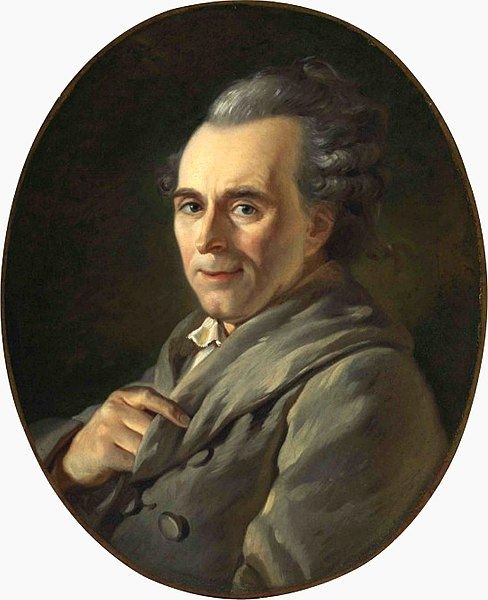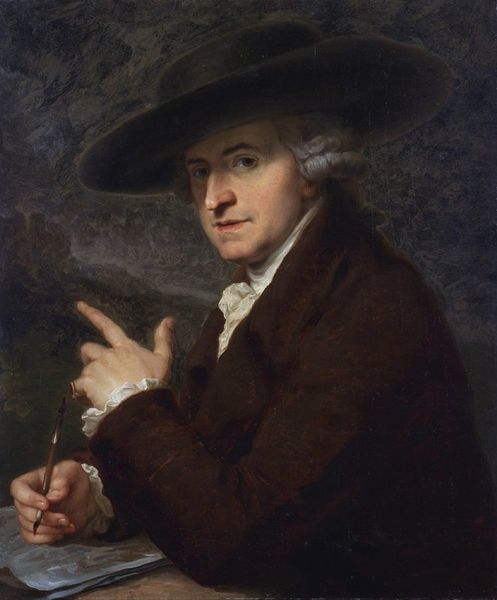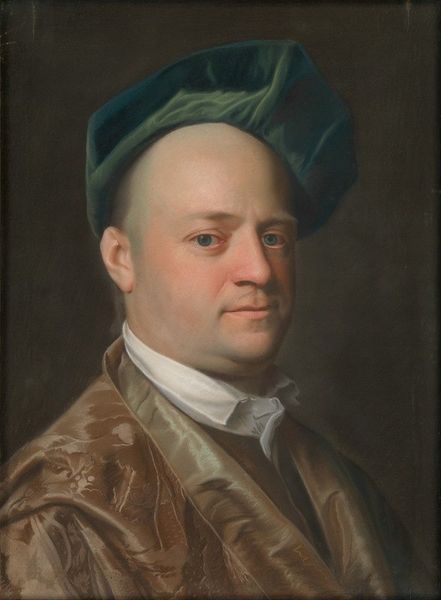
Self-Portrait with the bull's-eye 1737
0:00
0:00
mauricequentindelatour
Musée d'Art et d'Histoire, Geneva, Switzerland
pastel
#
portrait
#
self-portrait
#
intimism
#
pastel
#
rococo
Dimensions: 48.5 x 61.5 cm
Copyright: Public domain
Editor: Here we have Maurice Quentin de la Tour’s *Self-Portrait with the bull's-eye*, a pastel created in 1737. I find his expression so inviting. What’s your take on this intriguing self-portrait? Curator: Well, situating it historically, this portrait defies the traditional solemnity expected of self-portraits at the time. Think about the rise of the bourgeoisie and how La Tour strategically cultivated relationships within that burgeoning social class. This affable demeanor and direct gaze served as a kind of… branding, you could say, aligning him with the enlightened sensibilities of his patrons. Notice his choice of attire. It suggests a comfortable informality. How does this contrast with the formal dress often seen in aristocratic portraits of the period? Editor: It's much more casual, like he’s inviting you into his studio, rather than presenting a facade of power. It feels intimate. Curator: Precisely! This intimacy also speaks to a shifting understanding of the artist's role in society. La Tour isn’t just a craftsman; he’s a personality. His ‘performance,’ as captured in the portrait, is as important as the final product. Consider how the 'bull's eye,' a lens fragment in the bottom right corner of the picture plane, implicates the viewer in a unique role for portraiture. Editor: That’s fascinating; it makes you think about the social context influencing not only *what* is being represented, but also *how* it is being represented. I’ve definitely gained a richer understanding of the Rococo era now. Curator: Exactly! And hopefully, a bit of insight into how artists negotiate their position within that society.
Comments
No comments
Be the first to comment and join the conversation on the ultimate creative platform.
